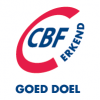
During the Dutch National Museum Week from 9-15 May, museums throughout the Netherlands will display their loveliest showpieces and people will be encouraged to visit museums. The motto is ‘Discover our real gold together’. Kaap Skil presents the money chest from the orphanage as the ‘real gold’.
This money chest isn’t just lovely to view, it also symbolizes various stories. The profits from the ‘wezen’ (orphan) wells were kept in it. The proceeds from selling the water were of vital importance for the orphanage. Of course, there had to be a good reason for seamen to pay for water from the wells. There was very good reason: the quality of the iron-rich water lasted for a long time, an essential value during long sea journeys.
The ‘wezen’ wells were in use from the early 17th century till around 1800. They supported the orphanage with several hundred guilders yearly. The water trade was also a source of income for other Texelaars. Someone had to transport the barrels to the ships and it wasn’t done for free. And there were a lot of trips back and forth between the wells, over the Skilsloot (ditch), and the Roads of Texel: a ship sailing to the east loaded at least 8000 liters of water in order to have a sufficient supply of drinking water to reach the Cape of Good Hope.
The metal money chest measures 72 x 38,5 x 42 cm and could be secured with two locks. In Museum Kaap Skil, you find the chest in one of the rooms off of the hall containing the Roads of Texel model. The water transportation itself can be seen on the model: small boats with barrels of water travel along the ‘Skilsloot’ in the direction of the sailing vessels anchored on the Roads.


